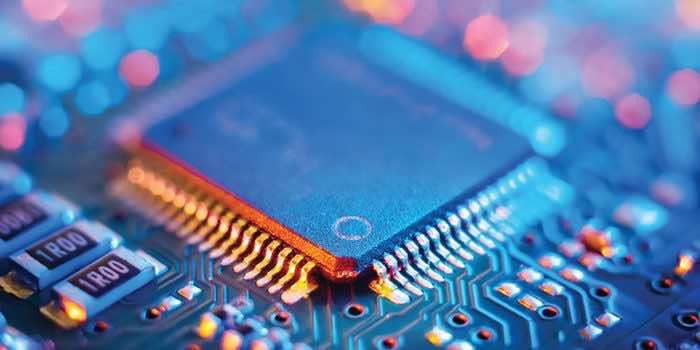Silicon and germanium, two semiconductors renowned for their exceptional properties, have played a pivotal role in advancing technology and innovation. From electronics and optics to solar cells and integrated circuits, these materials have revolutionized numerous industries. What follows is a look into the fascinating world of machined silicon and germanium, exploring their unique characteristics, applications, and the precision machining processes that unlock their full potential. You can click here for more information, or read on to find out more.
Understanding Silicon and Germanium
Silicon (Si) and germanium (Ge) are elemental semiconductors that possess remarkable electrical properties. Silicon, abundant in nature, is widely used in the electronics industry due to its high thermal stability, excellent electrical conductivity, and compatibility with microfabrication processes. Germanium, although less common, exhibits superior optical properties, making it valuable for infrared optics, photodetectors, and other specialized applications.
Machining Silicon and Germanium: Precision Engineering at its Finest
Machining silicon and germanium involves precision engineering processes that transform these semiconductors into complex shapes and structures. Some common machining techniques used include:
- Diamond Sawing: Diamond sawing is a popular method for cutting silicon and germanium into wafers or smaller pieces. Diamond blades, embedded with diamond particles, provide high cutting precision and minimize material loss.
- Grinding and Polishing: Grinding and polishing techniques are employed to refine the surface finish and thickness of silicon and germanium components. Abrasive materials are used in a controlled manner to remove imperfections, achieve desired dimensions, and enhance optical properties.
- Laser Machining: Laser machining utilizes high-energy laser beams to ablate or remove material from silicon and germanium surfaces. This technique allows for precise and intricate machining, making it ideal for creating microstructures and intricate patterns.
Applications of Machined Silicon and Germanium
The machined forms of silicon and germanium find applications in various industries, including:
- Electronics and Semiconductor Industry: Silicon wafers serve as the foundation for manufacturing integrated circuits, microchips, and electronic components. The precise machining of silicon enables the production of intricate structures required for advanced electronic devices.
- Optics and Photonics: Germanium lenses, windows, and prisms are widely used in infrared optics for thermal imaging cameras, night vision systems, and spectroscopy applications. The precise machining of germanium components ensures optimal light transmission and precise optical performance.
- Solar Energy: Silicon-based solar cells are the backbone of the solar energy industry. Machining techniques play a crucial role in shaping and refining the silicon substrates, enabling the efficient conversion of sunlight into electricity.
- Medical and Biotechnology: Machined silicon and germanium components find applications in medical devices, such as optical sensors, spectroscopy systems, and diagnostic equipment. Their precise machining allows for accurate measurements and reliable performance.
Advancements in Machining Technology
The machining of silicon and germanium continues to evolve with advancements in technology. Cutting-edge techniques, such as ultrafast laser machining and precision diamond turning, have enhanced the precision and efficiency of the machining process. These advancements enable the production of intricate structures and components with minimal material waste and improved surface quality.
Precision Machining: Enabling Miniaturization and Integration
Precision machining of silicon and germanium has been instrumental in the miniaturization and integration of electronic components. The ability to machine intricate structures and create precise dimensions allows for the production of smaller, more efficient devices. This has led to the development of advanced microchips, sensors, and other electronic components that power our modern technology.
Integration into Emerging Technologies
Machined silicon and germanium also play a significant role in emerging technologies. For example:
- Internet of Things (IoT): Machined silicon and germanium components are crucial for IoT devices, enabling connectivity and data processing. These components form the backbone of IoT infrastructure, facilitating seamless communication and intelligent decision-making.
- Artificial Intelligence (AI) and Machine Learning: AI and machine learning technologies heavily rely on high-performance computing systems, which often involve machined silicon and germanium components. The precise machining of these materials ensures the reliable performance and efficiency required for complex AI algorithms.
- Quantum Computing: Silicon and germanium have also shown promise in the field of quantum computing. Precision machining techniques are essential for creating the intricate structures and precise configurations required for manipulating quantum bits (qubits) in quantum computers.
Pushing the Boundaries of Optics
Machined silicon and germanium components have been pivotal in advancing the field of optics. The precise machining of these materials allows for the production of lenses, mirrors, prisms, and other optical components with exceptional optical properties. These components find applications in high-resolution imaging systems, telecommunications, spectroscopy, and other fields where precise light manipulation is crucial.
Meeting Future Challenges: Innovations in Machining Techniques
As the demand for smaller, more powerful devices continues to grow, the machining techniques for silicon and germanium are evolving to meet future challenges. Researchers and engineers are exploring new methods, such as nanoscale machining and ultra-precision techniques, to achieve even higher levels of precision and integration.
Advancements in nanofabrication processes, such as electron beam lithography and focused ion beam milling, are allowing for the creation of nanoscale structures with unparalleled precision. These techniques enable the development of novel devices and systems with enhanced functionality and performance.
What the Future Holds
Machined silicon and germanium have played a transformative role in various industries, powering our technological advancements and shaping the way we live and work. From electronics and optics to emerging fields like quantum computing and AI, these materials continue to push the boundaries of what is possible.
With ongoing advancements in machining techniques, silicon and germanium are poised to drive further innovations. The precise machining of these materials enables the production of smaller, more efficient devices and opens doors to new applications in diverse fields.
As researchers and engineers continue to explore the potential of machined silicon and germanium, we can anticipate exciting breakthroughs that will fuel technological progress, enhance connectivity, and pave the way for a future powered by precision and innovation.


